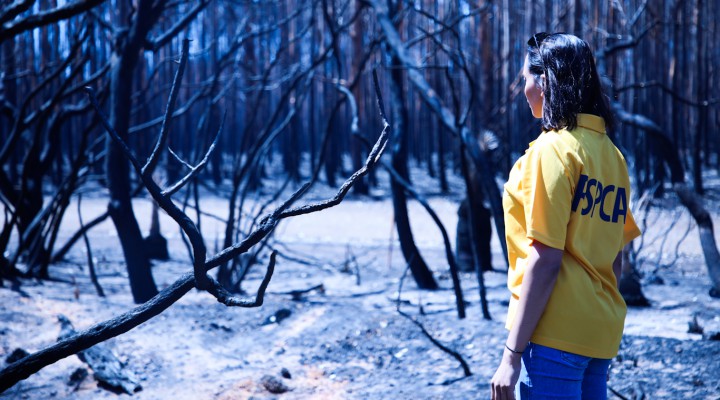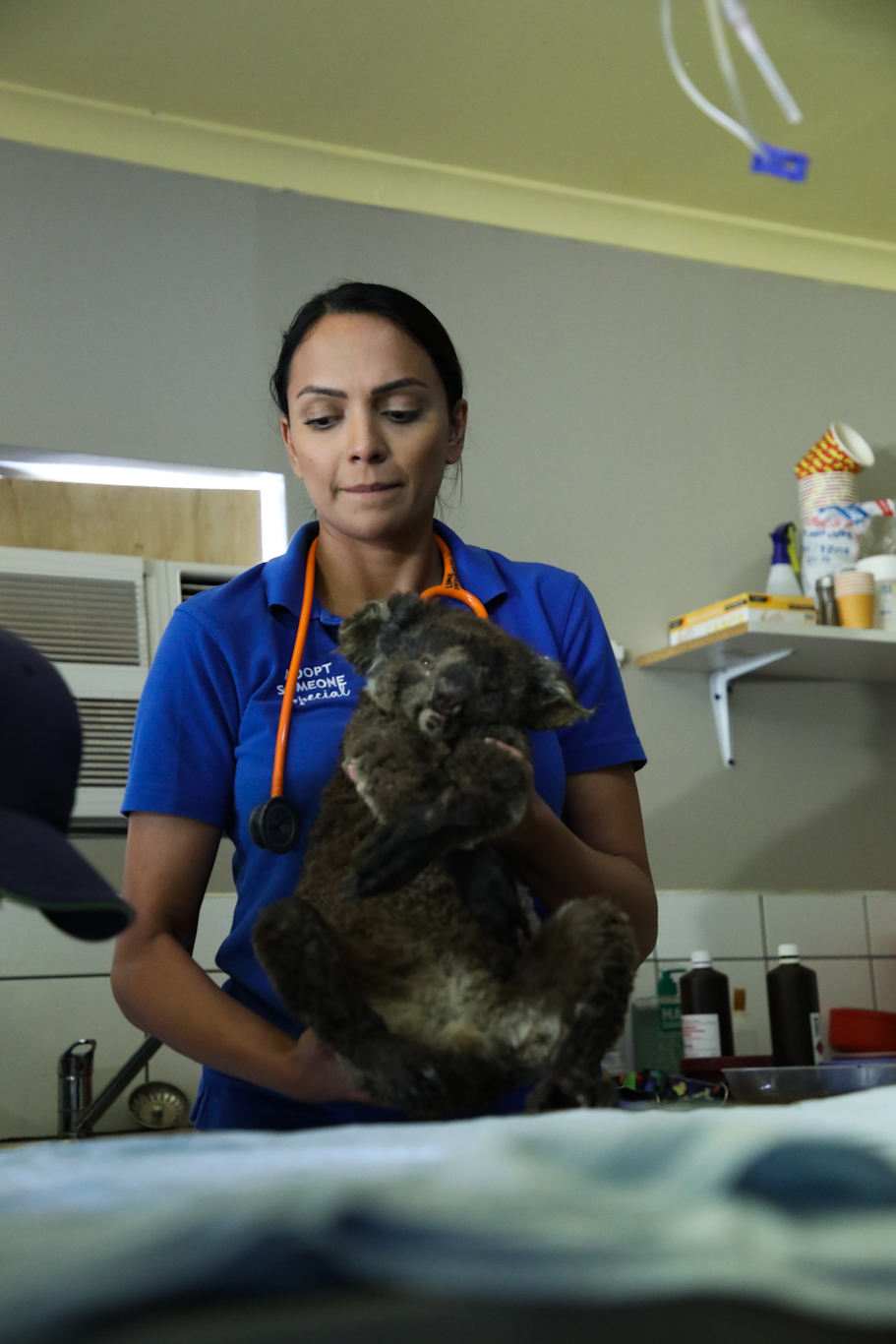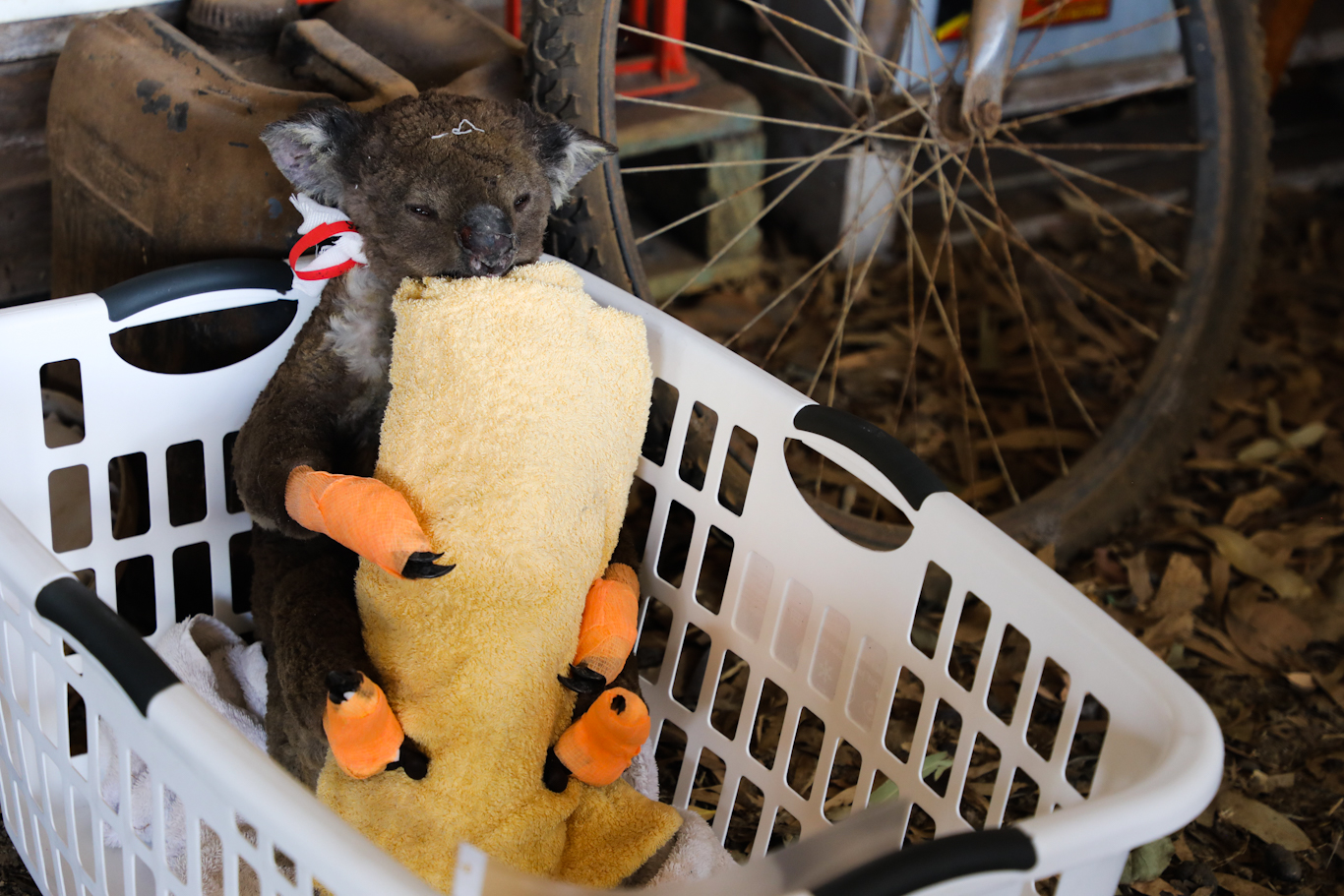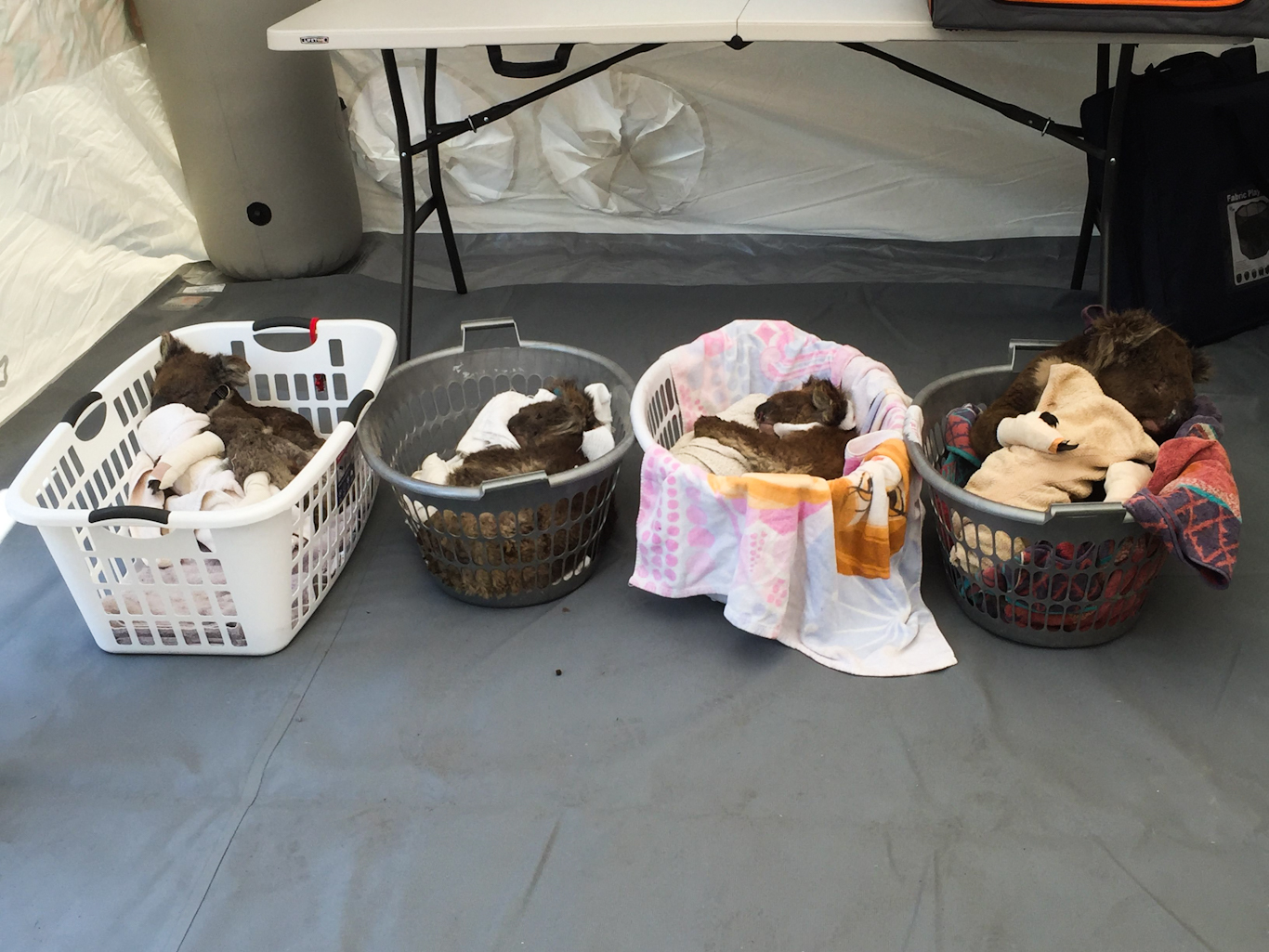While Some Battle to Save Australia’s Ecosystems, Others Blame Gov’t for Climate Change Denial

“This fire season has been a devastating wake-up call for many Australians. People who may have thought climate change was a vague, distant threat are now breathing bushfire smoke and reeling from the lives lost.”
MPN– Australia is burning. Since September of last year, an area larger than Japan has gone up in flames– more than twelve times the area that the California wildfires of 2018 engulfed. The worst blazes are concentrated in the south and east of the enormous island continent, but every state and territory has been hit. States of emergency have been called in New South Wales and Victoria, as aid agencies and volunteers battle to save property and both human and animal lives. Many have put their lives on hold, dedicating themselves to fighting one of the worst natural disasters in Australian history. The government of Scott Morrison has been condemned for years for ignoring the increasingly alarming warning signs of potentially catastrophic events.
Fires are a natural occurrence in the Australian bush, vital for regeneration. But the intensity and the speed of the blazes, which have been recorded traveling as fast as 40 miles per hour, have staggered those attempting to deal with it. Carolyn Jones from RSPCA South Australia, a charity which treats and rehomes injured animals, told MintPress News that, “The scale of wildlife and habitat devastation from these fires is unlike anything we have experienced,” adding that she fears that the bushfires have driven many native species to extinction. Josh Meadows from the Australian Conservation Foundation (ACF), an environmental group numbering some 600,000 members, agrees:
Conservative estimates by scientists suggest more than a billion native animals have been killed so far. Huge areas of habitat have been destroyed, meaning many animals that have survived the fires are now struggling to get enough food and water.”

Dr. Kothari treats a badly injured koala. Photo | RSPCA South Australia
Australia contains incredible natural beauty, from temperate rainforests to deserts to long mountain ranges, and possesses extraordinary biodiversity, with huge numbers of mammals, birds and reptiles evolving uniquely from the rest of the world in the more than 10 million years the landmass has been separated from others. However, much of it is under grave threat.
MintPress News followed the RSPCA’s attempts on Kangaroo Island, South Australia, (the country’s third-largest island), an area hit by particularly intense fires. It was home to over 25,000 koala bears, the only population in the world free from the endemic diseases of mainland koalas. Over 32,000 of the island’s livestock have already been confirmed dead. Dr. Gayle Kothari, a veterinarian with the RSPCA said that they were being inundated with dozens of animals. Staff are currently doing their best with limited resources to treat and ease the pain of a wide range of wildlife they find.
Many animals are in a state of shock; severely dehydrated, confused and hungry. Some arrive with terrible burns to their faces, skin or hands and need regular bandage changes and pain relief. When the RSPCA first arrived they had no electricity so they treated animals by torchlight. In lieu of a proper field hospital, they have had to improvise; “Every koala that gets an anesthetic is given subcutaneous fluids from a drip, and in the absence of a drip pump or a drip stand, we used a ladder and managed to get a rope over one of the beams on the roof of the shed,” Dr. Kothari said. Without cages, animals are placed in baskets lined with blankets after surgery. Their efforts have been stymied by the fires themselves, which forced them to evacuate the island earlier this month.

A badly injured koala is treated for burns. Photo | RSPCA South Australia
Jones told MintPress, “Our teams of expert staff are working in coordination with expert animal rescuers and carers from other organizations. It is an ongoing team effort by tireless and compassionate people to save as many animals as possible.” However, for many, it is already too late. Meadows suggests that the Kangaroo Island dunnart, a marsupial found only on the island, may have been driven to extinction, while he fears that the koala population across the southeast of the country has been decimated. RSPCA South Australia are currently raising funds – online donations can be made here. Dr. Kothari says the money will go towards providing lifesaving treatment to animals, many of whom need weeks of care, revegetating the island and supporting wildlife rehabilitation groups.

Injured koalas rest in the Parndana triage center. Photo | RSPCA South Australia
A Changing Climate
The increasingly hard to ignore background to the fires is a swiftly changing climate. Australia’s average temperature has increased by over 1°C over the last century. Before the fires began, the country was already suffering through its hottest and driest year on record, and things have got hotter still, with both the capital Canberra and the largest city, Sydney, experiencing all-time temperature highs this month. The western suburbs of Sydney reached over 120°F, replete with winds of over 60 mph on January 4. Many, not least the ACF, have pointed the finger at the government of Scott Morrison.
“This fire season has been a devastating wake-up call for many Australians. People who may have thought climate change was a vague, distant threat are now breathing bushfire smoke and reeling from the lives lost, the thousands of houses destroyed and the death of a possible billion native animals,” Meadows said.
The ACF released a press statement claiming Morrison had been bought off by the Australian fossil fuel lobby:
While our country burns on a scale and intensity never seen before, the Morrison government refuses to address the root cause – burning polluting fuels like coal… Coal, oil and gas companies donate big money to Australian political parties, buying access to decision-makers to block climate action and keep burning dirty fuels,” its CEO, Kelly O’Shanassy said.
The annual Climate Change Performance Index ranks Australia as one of the poorest performing countries on global warming, the index scoring Australia’s climate policy as the worst of all countries in the world. The country has seen huge protests over the past year over the building of more mines and coal power plants that assure that the world will not reach the required levels to stave off the worst effects of climate change.
Morrison himself, while giving the go ahead to more fossil-fuel-burning power stations, personally attacked teenage environmental activist Greta Thunberg, accusing her of spreading “needless anxiety” about climate change, suggesting that children were being propagandized into becoming environmental zealots. His government contains a number of outright climate change deniers who float disinformation and block efforts to reduce Australia’s CO2 emissions. In 2017, while Treasurer, Morrison axed funding to the National Climate Change Adaptation Research Facility, the organization telling The Guardian that Australia was now in no position to respond to climate emergencies.
https://twitter.com/tauerbach/status/1215418702536921089?ref_src=twsrc%5Etfw%7Ctwcamp%5Etweetembed%7Ctwterm%5E1215418702536921089&ref_url=https%3A%2F%2Fwww.mintpressnews.com%2Fbattle-save-australia-fire-blame-govt-climate-change-denial%2F264175%2F
While fake news spreads faster than the bushfires – conspiracy theories abound that arsonists, the Islamic State, or even China started the fires – the “real news” coverage of the catastrophe has not been much better. There has been a distinct reluctance to contextualize the fires as a consequence of global warming in both Australian and American corporate media, all of whom are either owned by or are funded through advertisements from heavy carbon-producing corporations. As one media watchdog put it: “Australia Wildfire Coverage Is Long on Koalas, Short on Causes.”
The Human Cost
The fires have released an estimated 400 million tons of carbon dioxide into the atmosphere. While firefighters have managed to extinguish some bushfires, others rage on; last week two merged to create a “megafire” measuring over 1.5 million acres. The smoke released is choking the country; microscopic, toxic particles released into the air are causing severe respiratory problems across the nation, as particles enter the human bloodstream and internal organs. The death toll officially stands at 28. However, long after the blazes have been extinguished, complications from smoke inhalation and mental illness induced by trauma will continue to take theirs.
Nearly 3,000 homes have been destroyed and countless numbers have been evacuated. Included in those were the residents of Mallacoota, Victoria, who spent New Year’s Eve trapped on the beach, as fires raged around the coastal town and smoke turned the sky orange. The clouds of smoke have traveled across New Zealand and the Pacific and have reached as far as South America, according to the National Oceanic and Atmospheric Administration.
Virtually every Australian has been affected, as fires rage across the country, in particular in the more densely populated southeastern states. Both Melbourne and Sydney have been engulfed in choking hazes. The fires have brought into sharp relief Australia’s vulnerability to climate change, with many with the opportunity considering permanently leaving. And as the country gets hotter, disasters on a similar scale will become a more regular occurrence.
Smoke pollution in Melbourne city from the Australian bushfires. Now vs a few days ago pic.twitter.com/5v87qeNzPi
— Beau Brooks (@BrooksBeau) January 14, 2020
Money has been pouring in in the form of donations worldwide, not least from Amazon’s Jeff Bezos, who donated three minutes’ income to help the operations. Heavy rain in the southeast has finally extinguished some of the blazes. But for residents of Melbourne, it was out of the frying pan and into the fire, as torrents of rain caused severe flooding today, reminding all that, no matter how much we fool ourselves, we are all subject to the elements. Without a substantial change in policy, rescue workers like those on Kangaroo Island will be fighting an uphill battle in the future.
While Some Battle to Save Australia’s Ecosystems, Others Blame Gov’t for Climate Change Denial
Feature photo | Dr. Gayle Kothari, a veterinarian with the RSPCA, inspects damage from wildfires on Kangaroo Island, South Australia. Photo | RSPCA South Australia
 TheAltWorld
TheAltWorld 
0 thoughts on “While Some Battle to Save Australia’s Ecosystems, Others Blame Gov’t for Climate Change Denial”